Kimberly Glyder
Principal/Designer
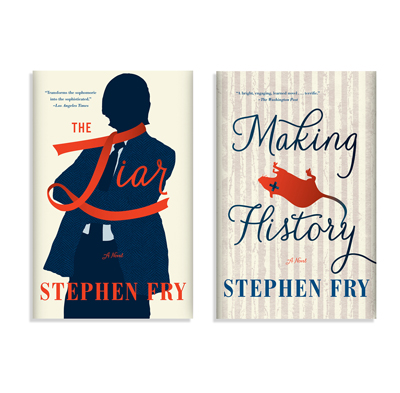
Forthcoming from Soho Press, newly republished series of books by Stephen Fry.
Primary design concentration:
Book design
Most preferred tools for designing:
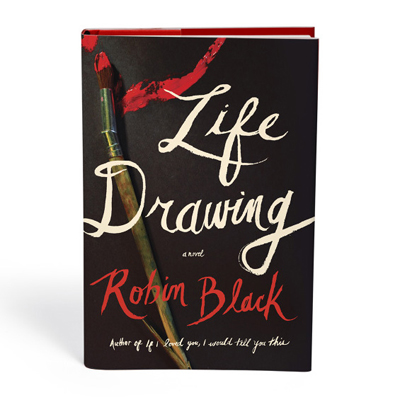
For Random House. The story centers around an artist and a murder. I took the photo and hand-painted the lettering.
How and why did you choose to become a designer?
Since early childhood, I was always connected to painting and drawing. I loved making books as a kid. I liked to draw all the rooms in my house and make a book out of it. Or spend an inordinate amount of time drawing a book cover for a book report. In high school, I went to an art magnet program where the idea of creating art as a career was firmly cemented in me. I was at The Rhode Island School of Design (RISD) for fine arts, but one day, I had time to spend in between classes and wandered into the graphic design gallery. The work I saw there challenged me to think about how ideas are presented, and more specifically, the interaction of type and image. This was all new to me. I think at that time in my life there was a lot of appeal in changing course and trying something different.
As for book design, I was always a voracious reader, so being able to combine books and design is an ideal fit for me.
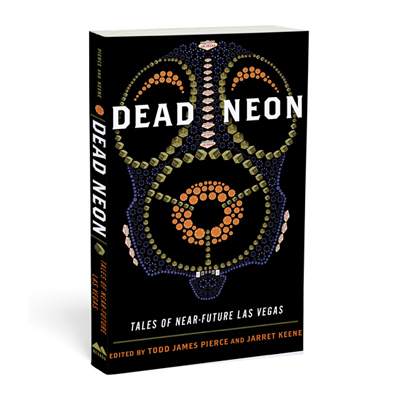
Dice, chips and the Las Vegas sign are constructed to look like a gas mask for this collection of science fiction, which takes place in Las Vegas.
What are some of the challenges you encounter as a designer and how do you deal with them?
Revisions are probably one of the biggest challenges as a designer. For book covers, you attempt to distill all of the writing visually into one “image.” Having to revisit your intuitive response to the writing can be difficult. That’s where I struggle a little with the instincts I have as a fine artist, contrasting with a designer’s need to solve problems.
Juggling work hours and scheduling can also be very challenging. There really is no downtime, though since I’ve had kids, this has had to change. It’s a constant balancing act. Some clients are more sensitive to “business hours,” but in general, the assumption is that when you work for yourself, you work late nights and weekends as well. I admire designers who can set up clear boundaries between their work and personal life.
What is your definition of an "elegant solution," that is, good design?
Conceptual, engaging and visually appealing.
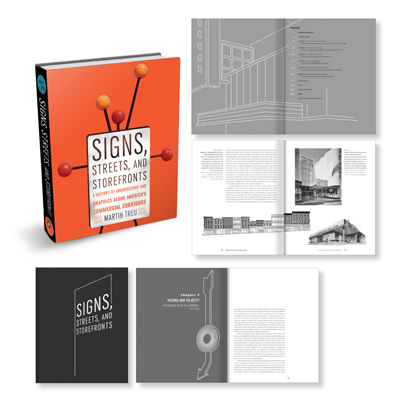
Book about the unique history of signage in the U.S.
From skills to values, what makes a designer successful?
Drive. You have to be self-motivated. I think this is what makes anyone successful, but especially in the design/illustration/photography fields where you might be working solo at some point in your career. Also, humility and confidence.
How do you stay motivated and grow personally and professionally as a designer?
There are still so many kinds of projects I want to work on, or clients I want to work with, so that continues to motivate me. The talent pool in book design helps keep me motivated too.

Book cover for a novel.The cottonwood leaves (mentioned in the book) form to create a sun.
For those aspiring to become a designer, whatever the discipline, what is your advice?
Envisioning where you want to be someday should never be underestimated as a HUGE motivational tool.
What is your quest in design, from a professional practice, education or evolution standpoint?
I hope my works stands up years from now. I’m always happy when I get to use a paintbrush, so I suppose continuing to merge my love of art and design is how I see my work expanding.
Previous: Aileen Cheng | Next: Melissa Dettloff
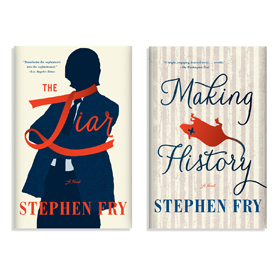
Support this solo initiative
What began as a collection of links has evolved into a comprehensive archive committed to creative culture—offering so far 395 interviews with under-the-radar Artists, Designers & Makers, in addition to 202 write-ups across events, books, movies, more. Free to explore. Free from ads. If you gain a level of motivation, knowledge, even delight, from Design Feast, please support on Patreon. Thanks for your consideration!
Wishing you continual success,
Nate Burgos, Content Creator & Publisher
Comments
There are no comments yet.
Leave Your Comment